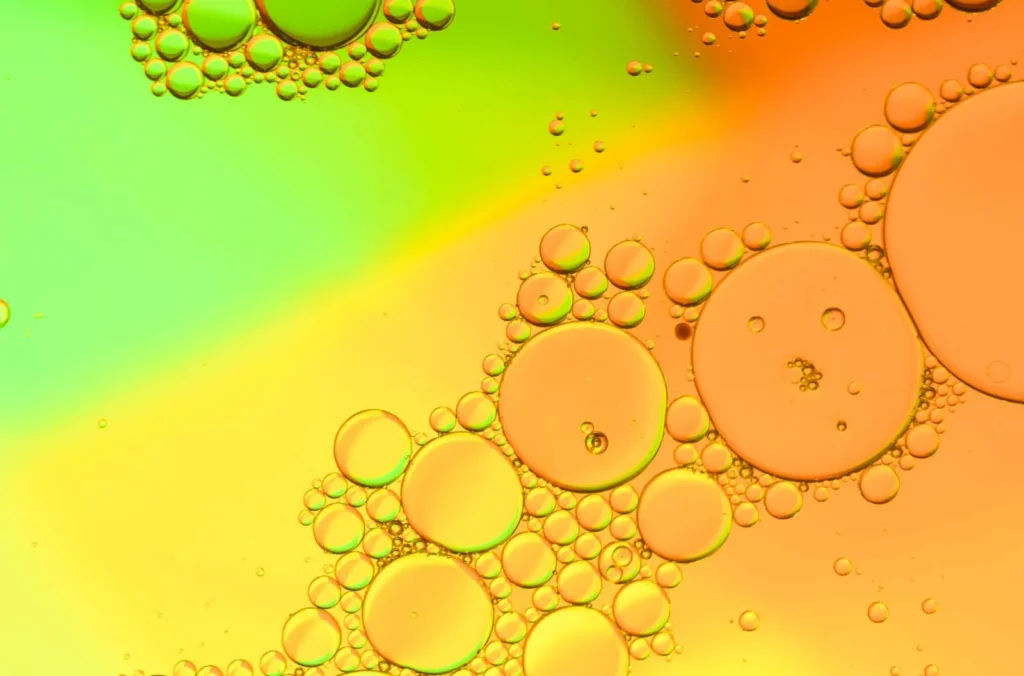How Defoamers Can Save Time and Money in Industrial Production
How Defoamers Can Save Time and Money in Industrial Production
Blog Article
Picking the Right Defoamer for Your Specific Application Requirements
Selecting the suitable defoamer for specific application demands is a nuanced procedure that demands cautious consideration of several aspects, such as the foam medium, operating, and kind conditions. Understanding the nuances of defoamer efficiency-- consisting of rate and perseverance-- while also making up regulative and ecological elements is essential. In addition, taking part in trials and seeking advice from makers can offer valuable insights. However, browsing these intricacies can be daunting, and the effects of a poor option might be substantial. What approaches can be used to guarantee an optimum option?
Understanding Foam Development
Foam development takes place when gas is trapped within a fluid, creating a steady structure of bubbles. This phenomenon can substantially affect different industrial processes, specifically in fields such as food manufacturing, drugs, and wastewater therapy. The existence of foam can prevent blending, lower product quality, and also cause functional inadequacies.
Foam usually creates because of a mix of elements, consisting of surface-active agents, frustration, and the attributes of the fluid stage. Surfactants reduced the surface stress of the liquid, facilitating the development of bubbles that can integrate and support. Agitation, whether from mechanical stirring or gas intro, enhances bubble development, causing enhanced foam volume.
Recognizing the technicians of foam formation is critical for sectors aiming to maximize their processes. By recognizing the details conditions that advertise foam generation, companies can implement strategies to mitigate its impacts. This knowledge lays the foundation for selecting suitable defoaming representatives that efficiently target the distinct challenges presented by foam in various applications. Subsequently, a thorough understanding of foam development is important for boosting efficiency and preserving item honesty throughout numerous industries.
Kinds of Defoamers Available
Different sorts of defoamers are offered to deal with the obstacles posed by foam in commercial applications. defoamers. Broadly classified, defoamers drop right into three groups: silicone-based, non-silicone-based, and natural defoamers
Silicone-based defoamers are renowned for their performance and security throughout a vast array of temperature levels and pH degrees. They are commonly used in applications where strong foam suppression is necessary, such as in finishings, paints, and adhesives. Their low surface tension enables rapid foam collapse.
Non-silicone-based defoamers, often made from organic substances, supply an option for applications conscious silicone deposits. These defoamers can be additional separated right into polyether and ester types, each tailored to fulfill details solution demands. Non-silicone defoamers are often utilized in food processing and individual treatment items because of their compatibility with various formulations.
Natural defoamers, acquired from plant or pet resources, are obtaining traction because of their environment-friendly profile. These products are specifically appealing in applications where governing conformity and sustainability are vital, such as in agrochemicals and biotechnology.
Picking the best kind of defoamer is important for enhancing efficiency and making sure compatibility with specific applications.
Trick Application Considerations
When choosing a defoamer, it is important to consider the certain application requirements to guarantee ideal performance. defoamers. Different markets have unique needs, such as food handling, pharmaceuticals, or wastewater therapy, and each application may call for distinct defoaming buildings
Secret factors to assess consist of the medium in which the defoamer will certainly be used, whether it is water-based, oil-based, or a mix thereof. The temperature and pH degrees of the application can additionally significantly affect the efficiency of a defoamer. In addition, compatibility with other chemicals present in the system is vital to avoid damaging reactions that might jeopardize efficiency.
One more important factor to consider is the lathering actions of the details system. Understanding whether the foam forms rapidly or slowly can assist the choice of a defoamer that targets the root reason properly. Moreover, the wanted speed of defoaming can affect the option, as some applications require rapid activity while others may tolerate slower defoaming processes.
Last but not least, ecological and regulative factors to consider need to not be neglected, especially in markets with strict conformity demands. Choosing a defoamer that lines up with these aspects guarantees both effectiveness and security in the application.

Efficiency Screening Approaches
Reviewing the performance of a defoamer requires an organized approach to testing that precisely determines its efficiency in particular applications. Different efficiency testing techniques can be employed to ascertain the ideal defoamer for an offered solution.
One common approach is the bubble test, which examines the defoamer's capability to reduce foam volume with time. This examination includes generating a stable foam and after that including the defoamer to observe the rate of foam collapse. Another method is the dynamic foam examination, where foam is generated under regulated conditions to simulate real-world application circumstances. This method offers understandings into just how the defoamer performs visit this page under varying shear problems.

Inevitably, picking the appropriate efficiency screening method relies on the specific application and the type of foam being addressed. Each approach provides beneficial information that can direct solution changes and enhance the performance of the defoamer in sensible applications.
Ideal Practices for Option


Following, consider the defoamer's efficiency in terms of rate of action and perseverance. A quick-acting defoamer might be required for procedures where rapid foam reductions is critical, while a much more consistent formulation may be required for extended foam control. Furthermore, assess the ecological impact of the defoamer, including its biodegradability and any type of regulative compliance demands.
Conduct trials with selected defoamers to determine their efficiency in real-world problems. This action is important to verify that the chosen item meets performance expectations. Consult with producers or suppliers for technical assistance and assistance, as they can offer important insights into item formulas and application strategies. By adhering to these finest methods, you can boost foam control efficiency and make sure the long life of your processes.
Final Thought
In recap, selecting the suitable defoamer necessitates a detailed evaluation of various variables, consisting of foam type, tool, operating problems, and environmental factors to consider. Understanding the unique attributes of foam formation and the available defoamer alternatives is like this crucial. In addition, employing reliable performance screening techniques and adhering to finest practices during the option process will boost the chance of attaining ideal defoaming results. Ultimately, a knowledgeable selection method will attend to particular application demands and minimize frothing difficulties successfully.
Picking the suitable defoamer for particular application demands is a nuanced procedure that demands cautious factor to consider of numerous elements, such as the foam type, tool, and operating conditions.Selecting the appropriate defoamer is essential for accomplishing optimal efficiency in foam control applications. A quick-acting defoamer might be essential for processes where fast foam suppression is important, while a much more consistent solution could be required for long term foam control.In summary, picking the check here suitable defoamer requires a comprehensive examination of numerous elements, including foam kind, medium, operating conditions, and ecological considerations. Recognizing the distinct attributes of foam formation and the available defoamer options is essential.
Report this page